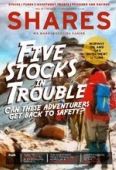Archived article
Please note that tax, investment, pension and ISA rules can change and the information and any views contained in this article may now be inaccurate.
Why The Great Crash 1929 is essential reading

In terms of market histories, The Great Crash stands out not just for the significance of the events it describes but also for the standard of writing.
As well as lecturing in economics at Harvard and Princeton, its author John Kenneth Galbraith was an accomplished author having published two major works before writing this seminal work.
His view was that people needed to be reminded of their behaviour, of what he called the ‘mass escape from reality’, in order not to make the same mistakes again.
Instead of leaving it to the regulators, he believed that ‘as a protection against financial illusion or insanity, memory is far better than law’.
WHAT CAUSED THE BOOM?
Galbraith doesn’t lay the blame for the boom with politicians or Wall Street: it was the product of free choice and the decisions of thousands of individuals.
The late 1920s were a good time for America with a strong economy, rising corporate earnings and high employment, and the public was showing a desire to get rich quickly ‘with a minimum of physical effort’.
The mid-1920s had already seen a real estate boom in Florida fuelled by the option to buy land for a 10% ‘margin’ payment.
However in the autumn of 1926 two hurricanes struck, killing hundreds of people, destroying thousands of homes and wiping out the speculators.
Despite these losses, the Florida boom seemed to convince the public that ‘God intended the American middle class to be rich’.
THE FED POURS FUEL ON THE FIRE
Stock prices were already rising sharply in the spring of 1927 when the Federal Reserve Bank cut interest rates and bought masses of Treasury bonds.
The funds the Fed made available either went straight into stocks or into lending to buy stocks ‘on margin’.
At this point the nature of the boom changed and ‘the mass escape into make-believe started in earnest’, says Galbraith.
Industrial companies even started using surplus cash or issuing new shares to play the markets rather than invest in new production.
As Walter Bagehot observed: ‘All people are most credulous when they are most happy’.
WHAT CAUSED THE BUST?
It’s in the nature of speculative booms that anything at all can make them collapse.
By September 1929 stock prices were no longer rising and buyers were no longer sure that they could sell on at a profit.
Confidence didn’t disintegrate overnight, but as prices dropped the brokers called for more margin payments and the speculators had to sell to repay their loans.
The panic really started in October 1929 as the market ‘degenerated into a wild, mad scramble to sell’ driven by ‘blind, relentless fear’.
WHY IS THIS RELEVANT 90 YEARS ON?
Speculative booms always break out after periods of economic prosperity. A strong economy generates confidence which combined with cheap money and margin lending leads to a mad dash for stocks and other assets.
Galbraith’s advice is that when rising prices overtake fundamentals as a reason for buying, think back to how ‘on some past occasion, illusion replaced reality and people got rimmed’.
Important information:
These articles are provided by Shares magazine which is published by AJ Bell Media, a part of AJ Bell. Shares is not written by AJ Bell.
Shares is provided for your general information and use and is not a personal recommendation to invest. It is not intended to be relied upon by you in making or not making any investment decisions. The investments referred to in these articles will not be suitable for all investors. If in doubt please seek appropriate independent financial advice.
Investors acting on the information in these articles do so at their own risk and AJ Bell Media and its staff do not accept liability for losses suffered by investors as a result of their investment decisions.
Issue contents
Big News
- Could Unilever turn the tables on Kraft Heinz?
- Doubts raised on OneSavings Bank and Charter Court merger
- Superdry, Kier, Domino’s and other news
- What Norway’s oil investment U-turn means for UK investors
- Raft of negative economic data fuels global growth concerns
- Airline sector gets tough on shareholders to keep flying post-Brexit

 magazine
magazine









